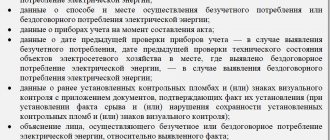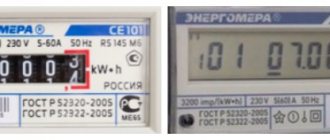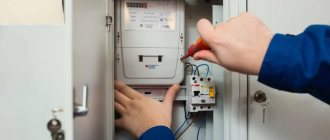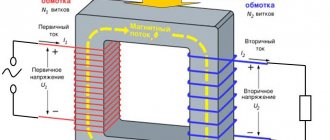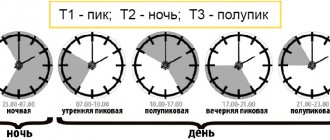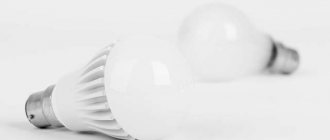04 April 2019
Adviсe
Why can a meter malfunction or interference with its operation lead to costs of hundreds of millions of rubles and how to prevent this?
Entrepreneurs who use large real estate assets fear energy sales inspectors more than the tax inspectorate. One of the reasons is that if the electricity meter fails or the inspector detects interference with its operation, then the electricity consumption will be considered unaccounted for. In this case, the amount of electricity consumed can be recalculated.
The number of cases of unaccounted consumption is growing every year. The amounts of claims reach hundreds of millions. At the same time, judicial practice in such cases is heterogeneous, since the court needs to prove specific circumstances. Relying on similar disputes is almost pointless.
In what cases is electricity consumption considered unmetered?
The grounds for concluding that electricity consumption is unaccounted for are specified in paragraph 2 of the Rules approved by Decree of the Government of the Russian Federation of May 4, 2012 No. 442.
The most common among them are:
- failure or damage of the seal on the metering unit - such units may include meters and current transformers;
- impact on the metering device, for example using a magnet, is detected if there is an anti-magnetic seal;
- mechanical interference with the operation of the meter or other actions that affected its operation;
- Violation of the meter verification period or the procedure for notification of its malfunction.
You can read about what to do if the verification period for a meter expires, the seal is damaged or the meter is broken in the publication “Replacing a meter: how to avoid becoming a victim of a fraudster.”
Calculation of unmetered (unaccounted) electricity consumption for organizations
Recently, the number of legal disputes between consumers and network or energy sales companies over acts of unmetered electricity consumption has increased.
In this case, the consumer faces a very large financial responsibility in the form of a “fine” for unaccounted consumption of electrical energy. Therefore, consumers must clearly understand the legislative features of calculating and determining the extent of their responsibility when identifying non-accounting.
According to Government Decree No. 442 of 04.05.2012 (hereinafter referred to as the Resolution), unmetered consumption is defined as “consumption of electrical energy in violation of the energy supply agreement established (purchase and sale (supply) of electrical energy (power), contract for the provision of services for the transmission of electrical energy) and this a document on the procedure for metering electrical energy on the part of the consumer (buyer), expressed in interference with the operation of the metering device (metering system), the responsibility for ensuring the integrity and safety of which is assigned to the consumer (buyer), including violation (damage) of seals and (or) visual control signs applied to the metering device (metering system), in failure to comply with the deadlines established by the contract for notification of the loss (malfunction) of the metering device (metering system), as well as in the commission by the consumer (buyer) of other actions (inactions) that led to distortion of data on the volume of electrical energy (power) consumption.”
Important! For categories of consumers equal to the population, from July 1, 2021, a different payment procedure will apply.
How to calculate unmetered electricity consumption for SNT, see here
In case of detection of unaccounted consumption from a consumer who does not belong to the category “equal to the population”, the following provisions of the Government of the Russian Federation No. 442 apply for calculating the volume:
- Clause 195 of Resolution 442. The volume of unmetered consumption of electrical energy is determined using the calculation method provided for in subparagraph “a” of paragraph 1 of Appendix No. 3 to the Resolution.
At the same time, in relation to the consumer, when making payments for electrical energy with whom the power rate is used, in addition to the volume of unaccounted consumption of electrical energy, the amount of power purchased under an agreement ensuring the sale of electrical energy (power) and the amount of power paid in terms of services are also determined for the transmission of electrical energy, based on the hourly volumes of electrical energy consumption, determined in accordance with subparagraph “b” of paragraph 1 of Appendix No. 3 to the Resolution.
The volume of unaccounted consumption of electrical energy (power) is determined from the date of the previous control check of the metering device (if such a check was not carried out within the planned time frame, then it is determined from the date no later than which it should have been carried out in accordance with this document) to the date identifying the fact of unaccounted consumption of electrical energy (power) and drawing up a report on unaccounted consumption of electrical energy...
2. Subparagraph “a” of paragraph 1 of the appendix to Resolution 442. The volume of electrical energy (power) consumption at the corresponding delivery point, MWh, is determined:
2.1. If the contract providing for the sale of electrical energy (power) on the retail market contains data on the maximum power of energy receiving devices at the corresponding point of delivery according to the formula:
How and by whom is unaccounted consumption detected?
Unmetered consumption is detected when the meter is checked by the owner of the electrical network or the electricity seller (sales company).
During the inspection, an inspection report (check) of the meter is drawn up, and if interference in its operation is detected, a report of unaccounted consumption is drawn up. The rules for checking the consumer and drawing up an act of unaccounted consumption are specified in paragraphs 169, 172, 176, 177, 192, 193 of the Rules approved by Government Decree No. 442.
Violations in checking and drawing up an act of unaccounted consumption may become grounds for the court to refuse to collect debt for electricity from the consumer.
Often inspectors commit the following violations:
- the consumer was not notified of the upcoming inspection, and he was absent at the time of its conduct;
- the witnesses indicated in the act of unaccounted consumption cannot confirm the fact of unaccounted consumption, or it is impossible to prove their presence;
- the act of unaccounted consumption does not contain information about how the interference with the operation of the meter was carried out, and evidence of this information - photographs;
- the act of unaccounted consumption is drawn up a considerable time after the meter check and not at the place where it was carried out, which does not allow assessing its reliability.
How is the amount of unaccounted consumption calculated?
The calculation procedure for unaccounted consumption is specified in clauses 194, 195 of the Rules approved by Government Decree No. 442.
It is made according to a formula that takes into account:
- the number of hours of consumption from the date when the meter was last checked until the report was drawn up;
- the power that the consumer can use is indicated in the energy supply contract.
It is these indicators - the number of hours of consumption and power - that need to be checked to be sure that the invoice is correct.
It is important to know:
- the calculation can be made for a period of no more than 1 year;
- from the total amount, the sales organization is obliged to exclude the amount that the consumer paid for electricity during the period of unmetered consumption;
- the sales company can be asked to provide installments, i.e. payment can be made in installments;
- failure to pay the bill within the time period established by the energy supply contract may result in a power outage;
- The energy supply contract may contain a condition regarding the operating hours of the consumer’s facility, for example from 9:00 to 22:00. In this case, the number of hours of unaccounted consumption will be less, which will affect the final bill.
Unmetered electricity consumption - Resolution 442
Unaccounted consumption is considered to be a violation in which
an inspection has established that the meter is damaged (the seal is broken or there is a mechanical breakdown - intentional or not) or it is missing altogether. In this case, sanctions will follow: the estimated amount of energy consumed will be recovered from the culprit.
The calculation is made according to the rules of Resolution 354 using a formula, the elements of which are:
- maximum power of all electrical appliances in the apartment;
- amount of time.
It is assumed that all devices worked throughout the entire period. The time period is limited:
- date of last inspection;
- date of discovery of the violation.
For reference. If there have been no inspections in the apartment for a long time, then the energy sector has the right to calculate losses only for six months.
In other words, if inspectors from sales companies came to check you last year or didn’t come at all, and during the check it turned out that the meter is not working, you will be billed:
- calculate the total power (maximum) of all electrical appliances in the apartment;
- this power will be multiplied by 4320 hours (six months).
They will calculate and issue a receipt that must be paid within 10 days. If you don’t pay, a penalty will apply.
We should also talk about the documentary component.
Is it possible to appeal an act of unaccounted (unaccounted) consumption?
Arbitration courts in most cases say that the act of unaccounted consumption and the issued invoice do not indicate a violation of consumer rights.
Therefore, they cannot be appealed. But courts often do not take into account that failure to pay a bill entails a violation of rights in the form of a power outage. If you are an entrepreneur, it would be better to pay part of the invoice first. Then apply to the arbitration court with a claim for recovery of unjust enrichment, that is, the previously paid amount on the invoice. As part of this dispute, it will be necessary to prove the absence of grounds for issuing an invoice. When filing a claim, you can apply for interim measures in the form of a ban on turning off electricity.
What needs to be proven in court to win a dispute over unmetered electricity consumption?
- The metering device was checked with violations that did not allow the consumer to provide their evidence.
- The act of unrecorded consumption has inaccuracies that indicate its unreliability and inadmissibility.
- The fact of unaccounted consumption is not confirmed by the act of unaccounted consumption, and there is no other evidence.
- There was no impact on the metering device. To prove this, it may be necessary to conduct an examination or involve an energy specialist in the case.
Determination of the volume and cost of unaccounted consumption
The volume of unaccounted consumption is calculated by the network organization and sent to the guaranteeing supplier (energy sales organization) along with the Unaccounted Consumption Report. The volume of unmetered consumption is determined as the product of maximum power and the number of hours. The maximum power is determined by the point of delivery at which unmetered consumption was recorded. If the agreement ensuring the sale of electrical energy on the retail market does not provide for the distribution of maximum power among delivery points, then the maximum power of power receiving devices is distributed among delivery points in proportion to the value of the permissible long-term current load of the input wire (cable). If in the agreement with the SE (ESO), there is no data on the maximum power value or if, when identifying unmetered consumption, an excess of the maximum power was revealed, the volume of unmetered consumption is calculated not based on the maximum power, but based on the permissible current load of the input wire (cable). The number of hours is determined from the date of the previous check of metering devices or the date no later than which the check of the metering device should have been carried out , until the date of discovery of the fact of unaccounted consumption and drawing up a report on unaccounted consumption. The number of hours cannot be more than 8760 hours (1 year). After the expiration of the verification interval, the volume of unaccounted consumption is determined:
- For the 1st and 2nd billing periods - based on their readings from the calculated meter for the same billing period of the previous year, and in their absence - for the nearest billing period when such readings were provided;
- For the 3rd and subsequent billing periods - based on the maximum power (permissible current load of the input wire (cable)).
The cost of electrical energy (power) in the volume of unaccounted consumption is calculated by the guaranteeing supplier (energy sales organization) at prices for electrical energy (power) determined for the billing period in which the Unaccounted Consumption Act was drawn up. Invoice for payment of the cost of electrical energy (power) in the amount of non-contractual consumption:
- issued by the supplier of last resort (energy sales organization) under an agreement ensuring the sale of electricity;
- must contain a calculation of the volume and cost of unaccounted consumption;
- must be paid by the consumer within the period established in the contract providing for the sale of electricity.
After drawing up an Act on unaccounted consumption until the cause of unaccounted consumption is eliminated, the volume of consumption is also calculated based on the maximum power (permissible current load of the input wire (cable)).
General provisions on unaccounted consumption are described here. The features of unaccounted consumption of electrical energy after the expiration of the calibration interval are described here.
Who is responsible for unmetered electricity consumption: the owner or the tenant?
It happens that the premises in which unaccounted consumption has been identified are rented out.
In this case, the person who is responsible for ensuring the safety of the electricity meter will have to pay for electricity. The building owner may not have access to the meter. But in order to recover damages in connection with payment for unmetered consumption from the tenant, it is necessary to prove that it was he who had access to the meter and was obliged to service it and take readings. If this obligation is not provided for in the contract, the owner will have to pay the bill. It will be difficult to collect this amount from the tenant.
Responsibility
In addition to the obligation to repay the unpaid amount of consumed electricity, the violator will have to pay an administrative fine. Responsibility is provided for in Art. 7.19 Code of Administrative Offenses of the Russian Federation. The fine for unaccounted electricity consumption for citizens is 10-15 thousand rubles , for organizations - 100-200 thousand rubles.
If the damage caused is large or especially large, the materials are sent to the police to make a decision on initiating a criminal case under Art. 165 of the Criminal Code of the Russian Federation. Major damage – from 250 thousand rubles, especially large – 1 million rubles. Here the responsibility is more serious: a minimum fine of up to 300 thousand rubles, and a maximum of imprisonment of up to 2 years (in case of major damage). If the damage is particularly large, then the penalty is up to 5 years in prison.
